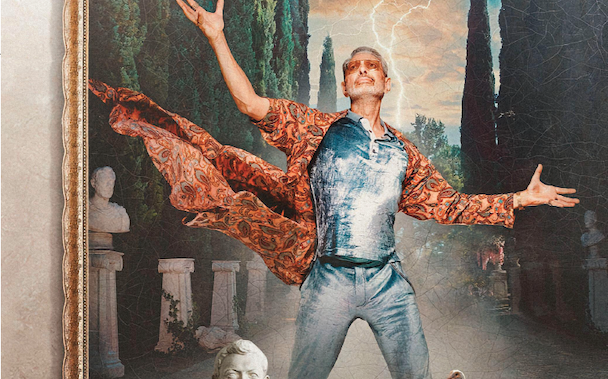Here’s how brands can win through content creation.
In today’s marketing landscape, content creation isn’t a nice-to-have – it’s the difference between being part of the conversation and being ignored altogether. The rules of brand engagement have changed. People don’t respond to ads the way they used to. They want stories. They want connection. They want real.
As group chief marketing officer of Convenience House, overseeing brands like Subway, Dunkin’, and Madame Sum in Switzerland, I’ve seen how fast and powerful the shift has been – from traditional media campaigns to content-driven storytelling. It’s not just a trend. It’s a new baseline. And for marketers who embrace this shift, the opportunity to grow relevance, loyalty, and sales, has never been bigger.
From big budgets to bold stories
Traditional advertising – glossy billboards, high-production TV spots, carefully staged print – is fading fast. Not because it never worked, but because audiences have evolved. We scroll through hundreds of pieces of content daily. Our attention gravitates toward what feels natural, entertaining, or useful – not overly-produced or obviously selling something.
In my experience, the content that performs best is often simple, timely, and emotionally clear. An effective approach can focus less on high-budget campaigns and more on content that feels native to the platforms in questions. Created reactive moments play into trends and let your brand’s personality show. It’s the strategy we’ve pursued at Subway Switzerland – resulting in a major shift in audience engagement and relevance, with Subway becoming a standout in digital culture, not just food service.
That wasn’t a one-off success. It’s what happens when brands start thinking in stories, not just in slots or campaigns.
Great content can’t save a weak product
While content is the vehicle, the product is still the engine. No amount of clever videos or engaging posts will make up for something people don’t want or trust. The first “P” in marketing – product – remains non-negotiable.
But if your product delivers, content becomes your greatest lever. I’ve worked with brands where a single behind-the-scenes video showcasing product uniqueness sparked thousands of organic shares and repeat orders. That’s the power of alignment: content that isn’t just entertaining, but rooted in real value.
Internal teams need to think like creators
Too many brands still treat content like an outsourced function. They brief influencers, hire agencies and hope for the best. But the brands that consistently win are the ones where in-house teams understand how content works – not just from a brand perspective, but from a creator perspective.
For many companies this requires a significant internal shift, to empower marketing teams to behave like creators: thinking fast, testing ideas, learning from the algorithm, and publishing with purpose. Stop chasing perfection and start building consistency.
You don’t need to be on every platform. But you do need to understand how people consume and interact with content on the ones that matter to your audience. That understanding has to live inside your team.
The creator collaboration playbook
Working with creators can supercharge content reach, but only when there’s real alignment. I’ve seen this go both ways. A huge creator with a disconnected audience will deliver less impact than a smaller one who truly believes in your brand.
The best partnerships come when you involve creators early, treat them as strategic partners, and give them space to do what they do best: make content that people actually want to watch. The best outcomes happen when brands provide direction, not control.
I’ve personally helped several creators grow their platforms through this approach, turning side projects into full-time careers. And when these creators collaborate with brands in an authentic way, the results speak for themselves. It’s not about chasing virality – it’s about earning trust at scale.
Systems win over luck
Creativity matters. But so does structure. A mistake I see too often is brands trying to “go viral” without having a content system in place. The reality is, consistent content creation requires strategy, not just inspiration.
That’s why I’ve developed repeatable frameworks over the years – systems that help brands and creators show up consistently, adapt quickly, and build content calendars that aren’t overwhelming. A clear framework, such as the one presented in my book The Content Creator’s Compass, can help by bringing order and clarity to a space that’s often chaotic and confusing.
Whether you’re building a brand from scratch or scaling an established one, you need a rhythm: content pillars, platform understanding, and a clear feedback loop. That’s how you go from one-hit wonders to long-term success.
The new reality of brand marketing
We’re living through a marketing transformation as big as the dawn of social media. Back then, brands hesitated to join Facebook or Instagram. Now, many are still dragging their feet when it comes to creator-led content, short-form video, or real-time storytelling. But the writing is on the wall. The brands that think like creators, operate with agility, and invest in platform-native content are pulling ahead fast. This isn’t a future trend – it’s already here.
And the upside? The barrier to entry has never been lower. The tools are accessible. The audience is there. For brands willing to make the leap, the opportunity is enormous.
We’re in the golden age of storytelling. Brands no longer need to shout to be heard – they need to connect to be remembered. If you’re a marketer today, your job isn’t just to promote. It’s to entertain, inform and engage. It’s to find your voice, understand your audience, and create content that earns attention – not demands it.
Whether you’re building a food empire, launching a new app, or managing a heritage brand, start thinking like a creator. Not because it’s trendy – but because it’s the most effective way to build modern brand love.



